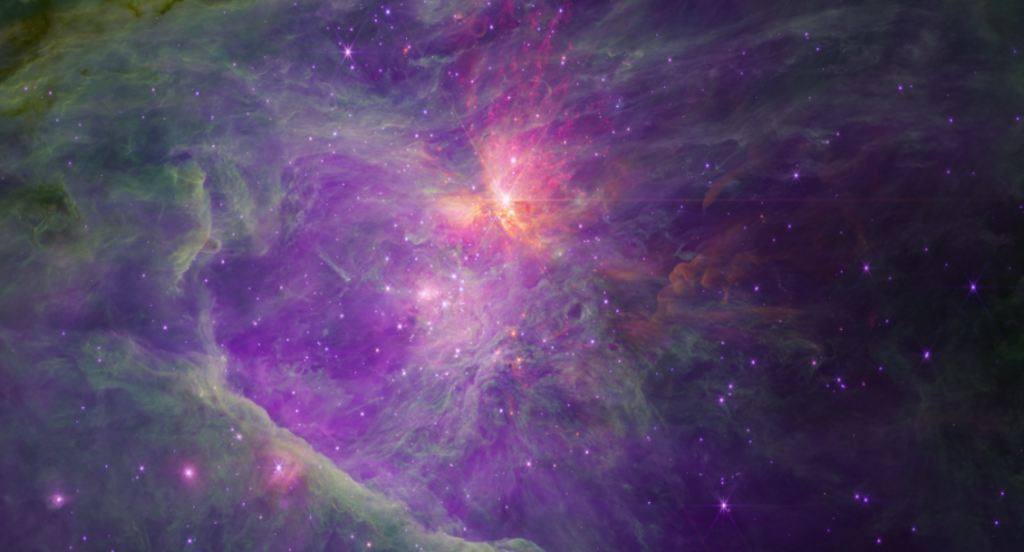One of the sky’s most frequently observed objects is the Orion Nebula. It’s seen as a little blob in the constellation Orion; all you have to do is look up on a clear night in the northern hemisphere. In this region of star formation, even a small telescope can see fine features; however, the James Webb Space Telescope sees far more. Some unusual objects in this region of space that had previously gone unnoticed have come to light thanks to the most recent wave of Webb observations. They exist in couples, are roughly the size of Jupiter, and the origin of them remains a mystery to all. They are currently referred to as Jupiter Mass Binary Objects, or JuMBOs.
From an astronomical perspective, the nebula is rather close to Earth, fewer than 1,400 light years away. No one has previously detected a JuMBO, despite years of astronomers using the finest telescopes on the planet to look into the nebula. But that’s precisely what Webb was meant to do—probe objects like this. It can zoom past cloud structures to observe stars that would be invisible to telescopes like Hubble, which mostly operates in the visual spectrum, and it has exceptional sensitivity in the near and mi-infrared.
Senior scientist Mark McCaughrean of the ESA led this study. The team’s broader nebula is depicted in the image above, which is not a single frame. In reality, it’s a mosaic made up of 700 smaller frames, each with more information than Hubble could possibly observe. The protoplanetary disk surrounding young stars in the data indicates the presence of several young solar systems. Though the mechanics underlying these systems are starting to become clearer to scientists, JuMBOs have no place in those models. They are also not uncommon. Of them, Webb saw 42 in the fresh observations.
JuMBOs are primarily around half the size of Jupiter, however they can approach its mass. A red dwarf, sometimes known as a M dwarf, can have a mass up to 13 times that of Jupiter. They are approximately 1,000 degrees Fahrenheit (537 degrees Celsius) at their surface. A single orbit of the binary pairs takes thousands of years to complete, with their distance from one another being 200 times larger than that of Earth and the sun.
So how did these peculiar binaries develop? According to the European Space Agency, the laws of gas physics should inhibit the formation of JuMBOs in isolation. They are far smaller than any star, yet they would be huge for a planet. Alternatively, these planets might have formed around a star and subsequently been expelled. Though there isn’t much data to support it, academics now lean toward the latter approach. But why they appear to occur in pairs is not properly explained by either explanation. Only Webb can search the heavens for additional JuMBOs. Maybe some more examples will clarify how they form. Whatever happens, they should maintain the moniker.
